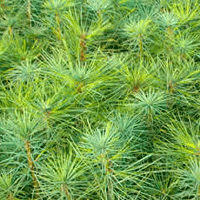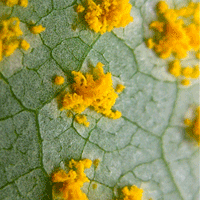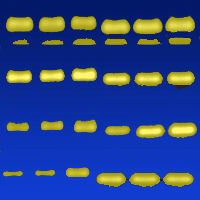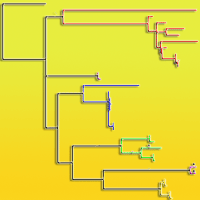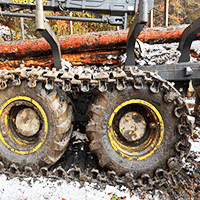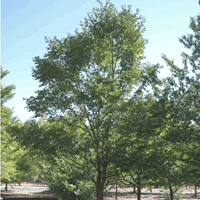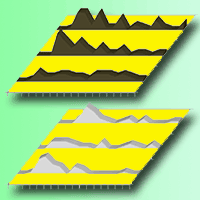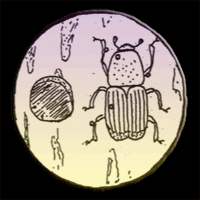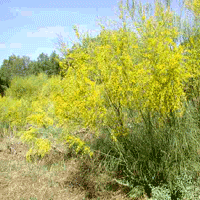
Outcome of Ceratocystis platani inoculations in Platanus × acerifolia in relation to season and inoculum dose
Massimo Pilotti , Giovanni Di Lernia, Vanessa Modesti, Valentina Lumia, Angela Brunetti
iForest - Biogeosciences and Forestry, Volume 9, Issue 4, Pages 608-617 (2016)
doi: https://doi.org/10.3832/ifor1594-008
Published: Mar 17, 2016 - Copyright © 2016 SISEF
Research Articles
Abstract
Ceratocystis platani is the causal agent of canker stain, the most destructive disease of Platanus spp. The selection of resistant tree genotypes should be an effective method of controlling the disease. Although breeding programs for resistance have been developed, there is no validated protocol for an in depth evaluation of the resistance phenotype. Testing the variables to identify the conditions that fully challenge the genetic potential of the host is crucial not to overestimate labile resistant phenotypes. Here we report results of testing different inoculum doses and inoculation times - early and late spring, summer and autumn - on the response of susceptible plane genotypes. Late spring inoculation gave rise to the quickest death pattern occurred, followed by early spring inoculation. Nevertheless Ceratocystis platani was aggressive also in the hottest period of the summer. The capacity of C. platani to initiate canker stain in the hottest period of the year underlines its capacity to be virulent in a wide range of temperatures. Although autumnal inoculation enabled fungus entry, its progression was precociously halted as effective and stable resistance reactions were opposed by the majority of the trees. An in vitro study of mycelial growth and conidial germination confirmed the capacity of the fungus to be active or to keep the viability in a wide range of temperatures such as in the three seasons that were taken into consideration. Thus we hypothesize that the failure of symptom expression after autumnal inoculation might be due to a combination of a temperature-linked reduction in pathogen virulence, and a season-linked resistant reaction of the host. Overall our data suggest that, in the context of legal sanitary measures, only the coldest and driest periods of the year should be considered for pruning and the removal of infected trees. The different inoculum doses did not condition the death pattern. Comparing germination in suspensions at 1.000 and 10.000 conidia per µl, self-inhibition germination occurred, as the germination rate was inversely correlated with the conidia concentration. This is a first step in the definition of a resistance-testing protocol for an in depth evaluation of resistance to canker stain.
Keywords
Inoculum Dose, Inoculation Time, Resistance Reaction, Self-inhibition Conidia Germination, Thermal Niche, Resistance Testing Protocol
Authors’ Info
Authors’ address
Giovanni Di Lernia
Vanessa Modesti
Valentina Lumia
Angela Brunetti
Consiglio per la ricerca in agricoltura e l’analisi dell’economia agraria, Centro di Ricerca per la Patologia Vegetale - CREA-PAV, v. Carlo Giuseppe Bertero 22, I-00156 Roma (Italy)
Corresponding author
Paper Info
Citation
Pilotti M, Di Lernia G, Modesti V, Lumia V, Brunetti A (2016). Outcome of Ceratocystis platani inoculations in Platanus × acerifolia in relation to season and inoculum dose. iForest 9: 608-617. - doi: 10.3832/ifor1594-008
Academic Editor
Alberto Santini
Paper history
Received: Feb 11, 2015
Accepted: Dec 01, 2015
First online: Mar 17, 2016
Publication Date: Aug 09, 2016
Publication Time: 3.57 months
Copyright Information
© SISEF - The Italian Society of Silviculture and Forest Ecology 2016
Open Access
This article is distributed under the terms of the Creative Commons Attribution-Non Commercial 4.0 International (https://creativecommons.org/licenses/by-nc/4.0/), which permits unrestricted use, distribution, and reproduction in any medium, provided you give appropriate credit to the original author(s) and the source, provide a link to the Creative Commons license, and indicate if changes were made.
Web Metrics
Breakdown by View Type
Article Usage
Total Article Views: 53583
(from publication date up to now)
Breakdown by View Type
HTML Page Views: 44492
Abstract Page Views: 3440
PDF Downloads: 4305
Citation/Reference Downloads: 62
XML Downloads: 1284
Web Metrics
Days since publication: 3560
Overall contacts: 53583
Avg. contacts per week: 105.36
Citation Metrics
Article Citations
Article citations are based on data periodically collected from the Clarivate Web of Science web site
(last update: Mar 2025)
Total number of cites (since 2016): 11
Average cites per year: 1.10
Publication Metrics
by Dimensions ©
Articles citing this article
List of the papers citing this article based on CrossRef Cited-by.
References
Regression models and life tables. Journal of the Royal Statistical Society Series B 34 (2): 187-220.
Gscholar
“Salviamo il Canal Du Midi”: una colletta per i platani che ispirarono Matisse [“Let’s save the Canal Du Midi”: a collection for the plane trees that inspired Matisse]. Newspaper article, La Repubblica, Italy, 25 July 2013, pp. 20.
Gscholar
The micropropagation of Platanus acerifolia Willd. Advances in Horticultural Science 18: 121-126.
Gscholar
Misure di emergenza per la prevenzione, il controllo e l’eradicazione del cancro colorato del platano causato da Ceratocystis fimbriata [Emergency measures for the prevention, control and eradication of canker stain of plane tree caused by Ceratocystis fimbriata]. MIPAAF, Rome, Italy, pp. 5. [in Italian]
Gscholar
Data sheets on quarantine organisms Ceratocystis fimbriata f. sp. platani. European and Mediterranean Plant Protection Organization Bulletin - OEPP/EPPO Bullettin 16: 21-24.
Gscholar
Data sheets on quarantine organisms “Diagnostic protocols for regulated pests: Ceratocystis fimbriata f. sp. platani” (Annesi T, Motta E, Pilotti M eds). European and Mediterranean Plant Protection Organization Bulletin - OEPP/EPPO Bullettin 33: 249-255.
Gscholar
Data sheets on quarantine organisms “Diagnostic protocols for regulated pests: Ceratocystis platani” (Pilotti M, Lumia V, Brunetti A eds). European and Mediterranean Plant Protection Organization Bulletin - OEPP/ EPPO Bulletin, 44: 338-349.
Gscholar
Selezione per la resistenza al cancro colorato in Platanus × acerifolia [Selection for resistance to canker stain in Platanus × acerifolia]. Informatore Fitopatologico 52: 28-37. [in Italian]
Gscholar
Protocollo diagnostico per Ceratocystis platani [A diagnostic protocol for Ceratocystis platani]. Petria 23: 185-223. [in Italian]
Gscholar


